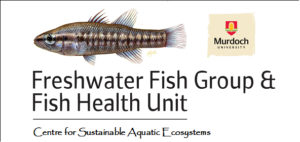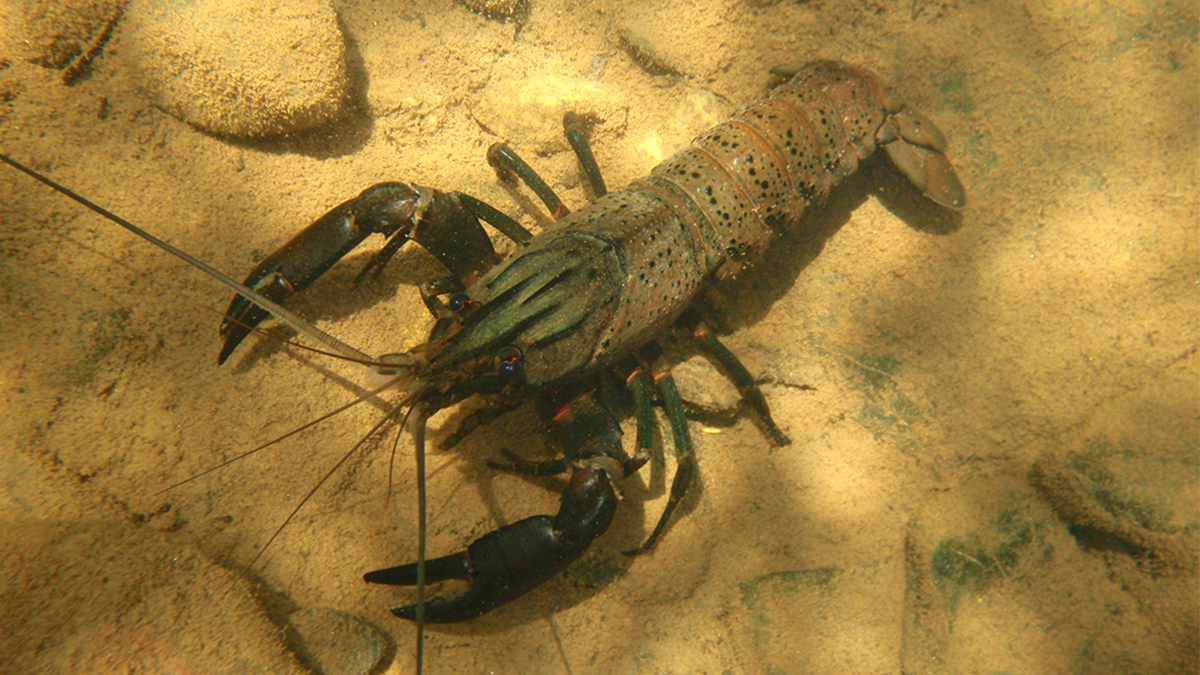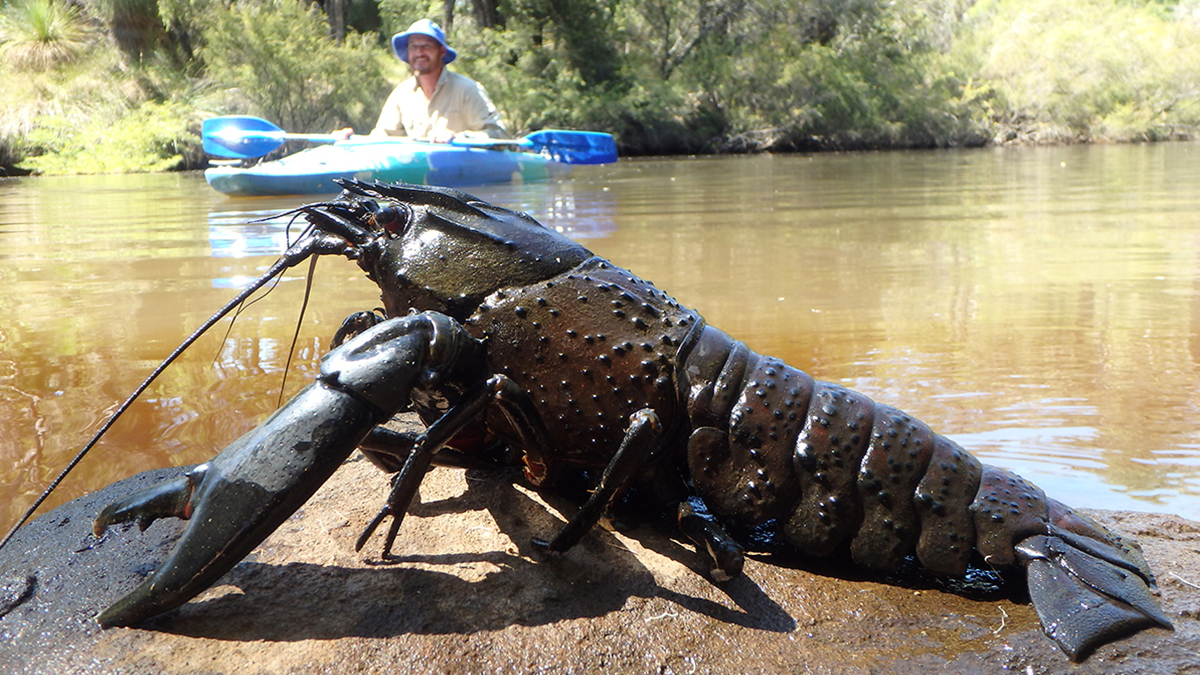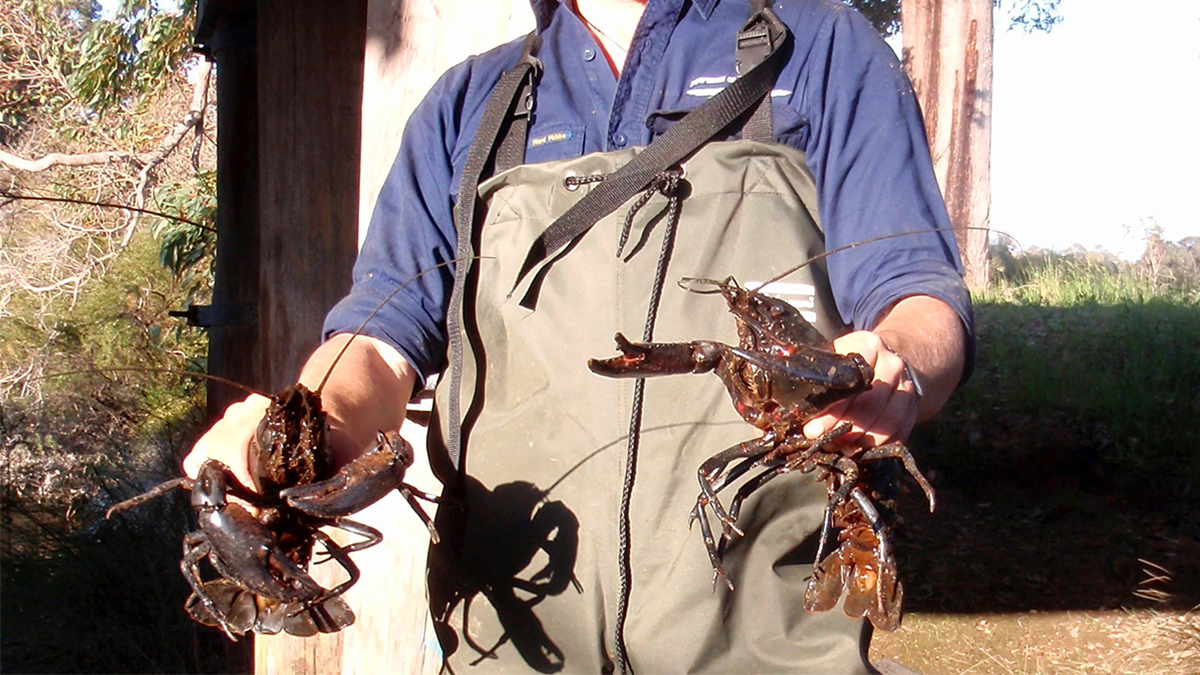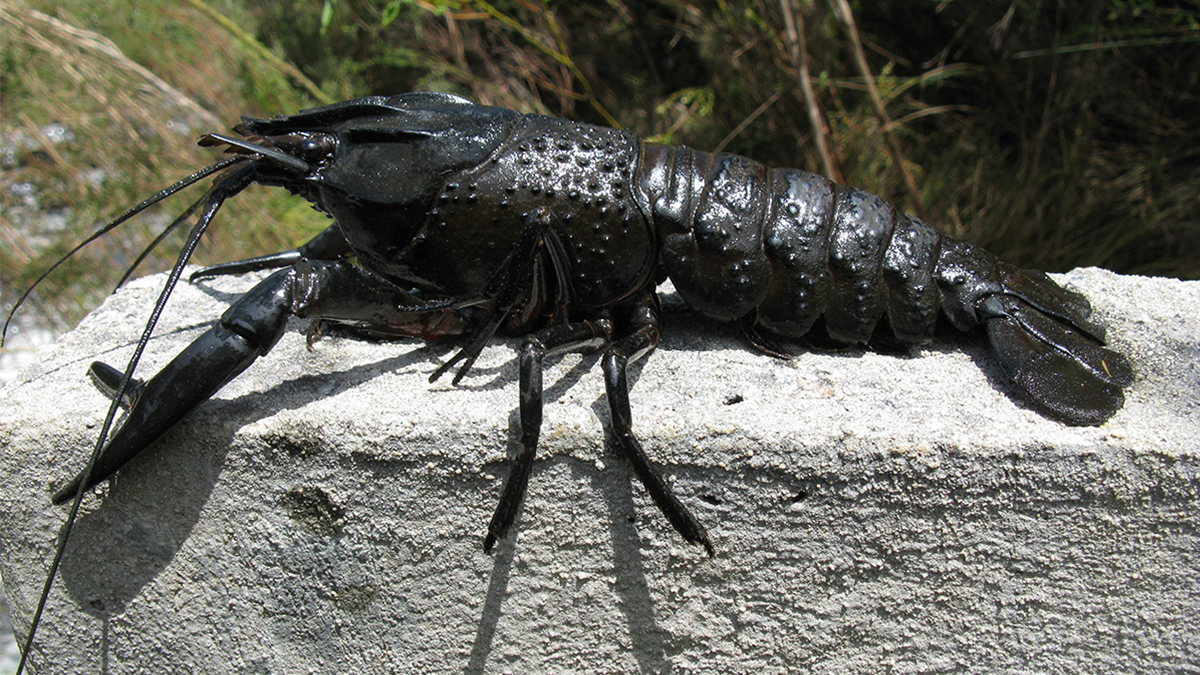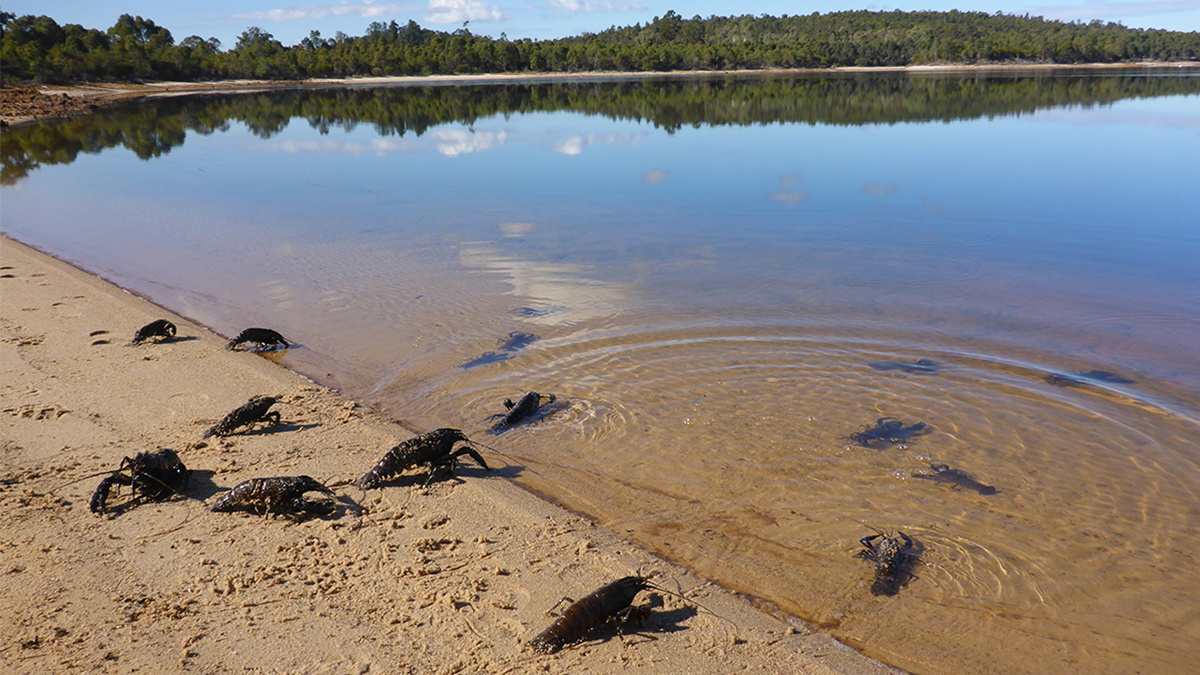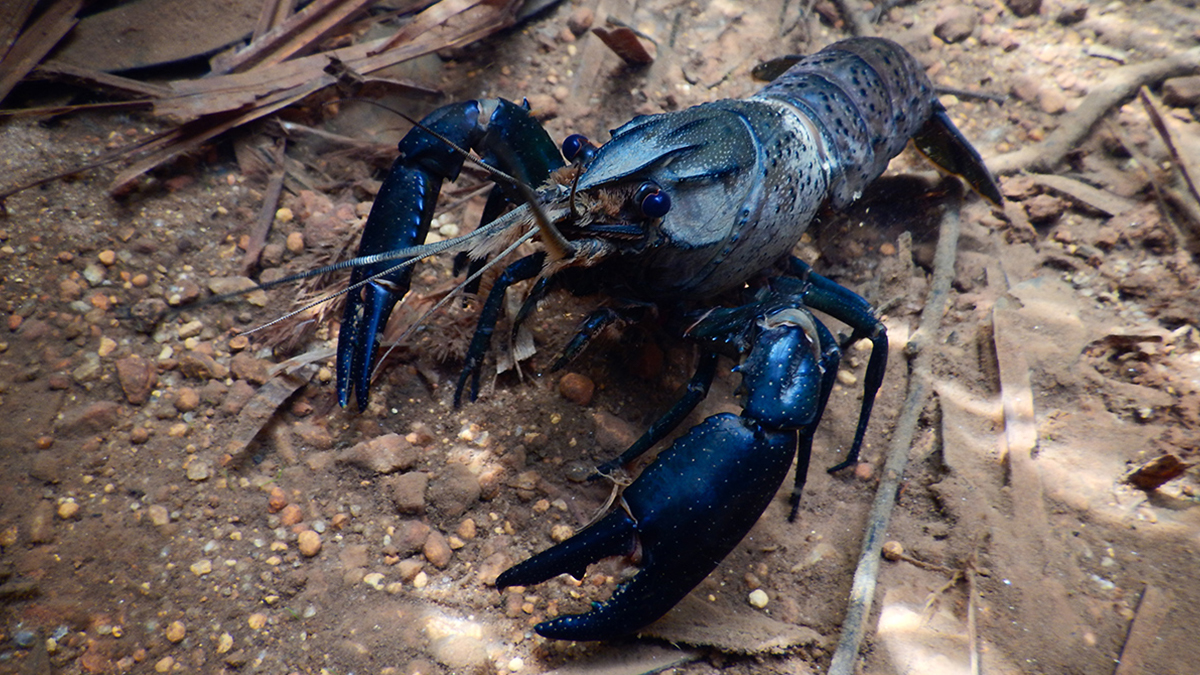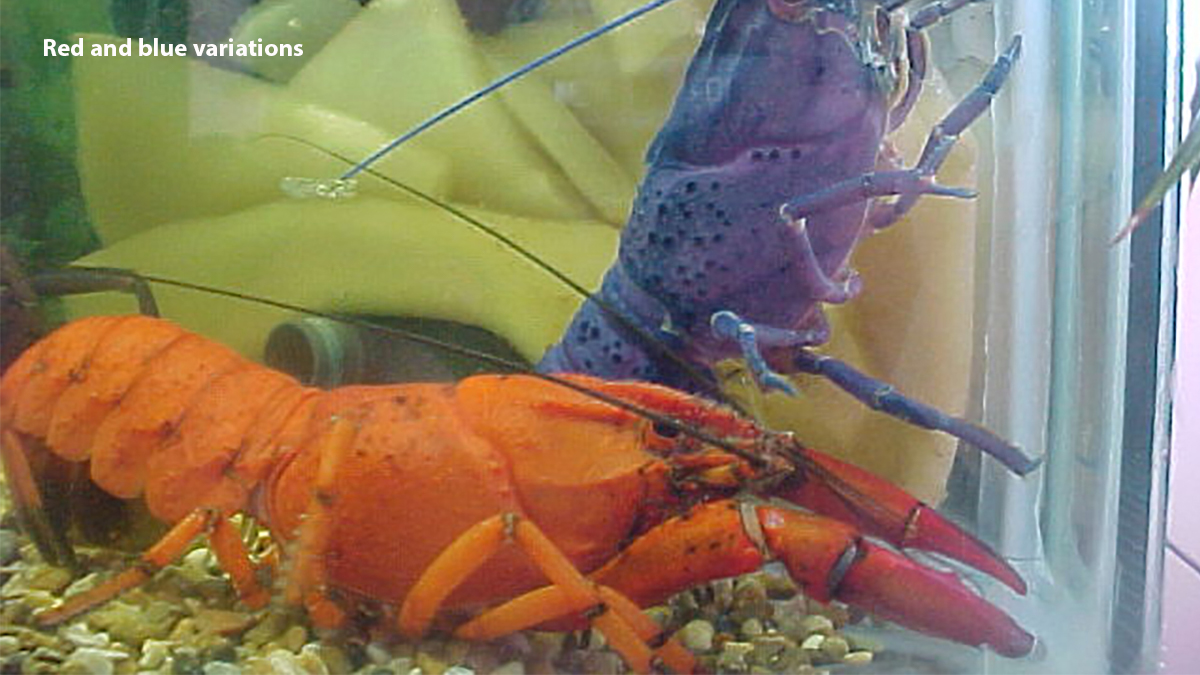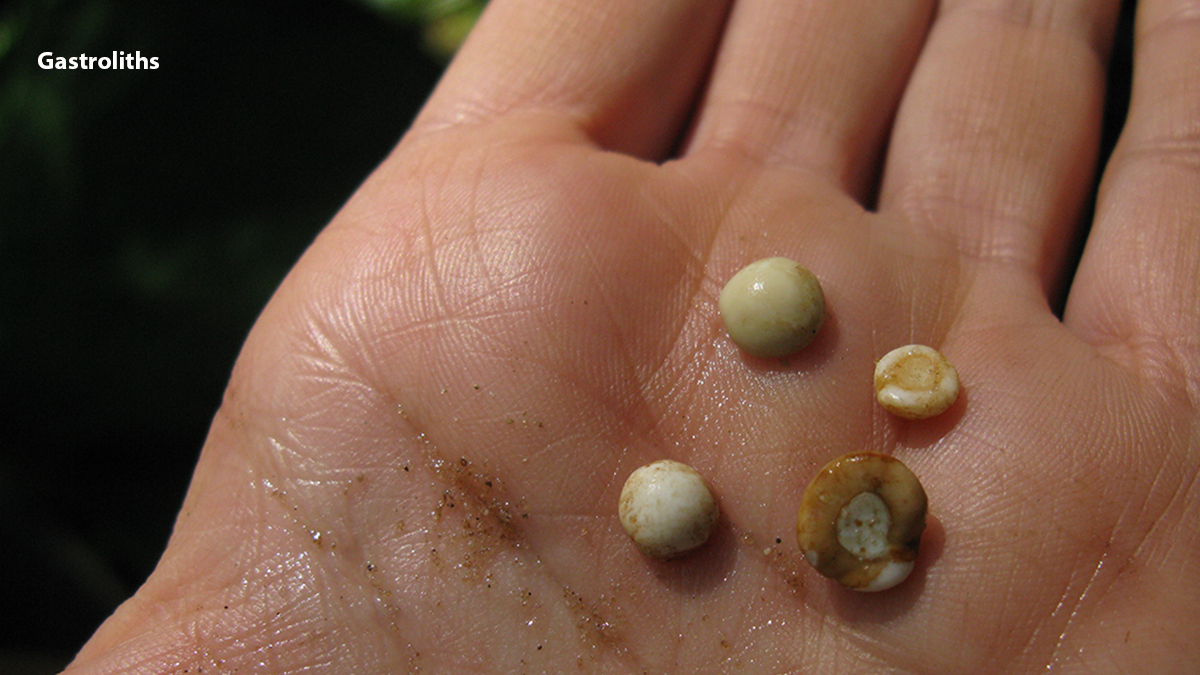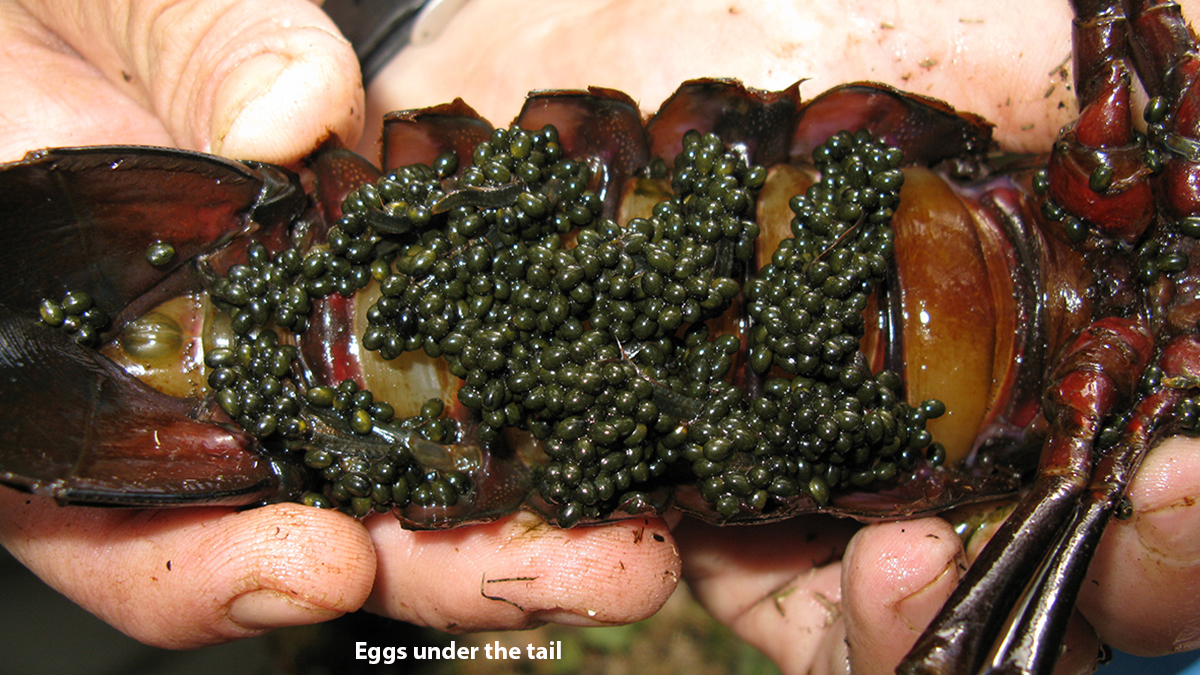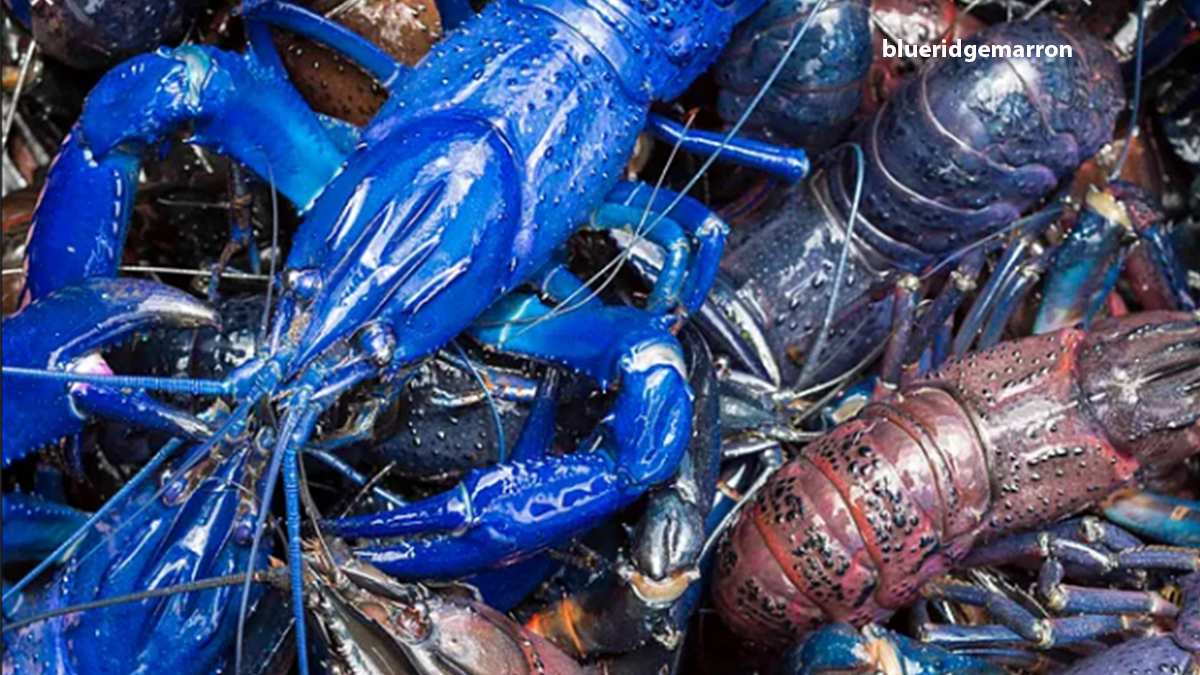Smooth marron - Cherax cainii
This page was created in partnership with the Freshwater Fish Group and Fish Health Unit at Murdoch University
Identification
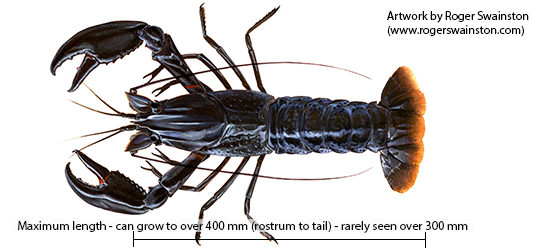
The third largest freshwater crayfish in the world, only behind the giant Tasmanian crayfish (Astacopsis gouldi) and the Murray River crayfish (Euastacus armatus). The smooth marron can grow over 400 mm (rostrum to tail) and weigh over 2 kilograms.
This is an iconic species in the south-west, and the primary recreational fishing species in fresh inland waters.
It is generally easily identified by the 5 prominent keels of the head (the only other species with 5 keels is the gilgie, which is typically much smaller, and the hairy marron - discussed below) and a set of spines (2) on the telson (central tail fan) - which only exist in the two marron species. The hairy marron is similar in appearance to the smooth marron, but only occurs in the upper Margaret River, has distinctive hairs on the body, and the central keel extends to the cervical groove (whereas the central keel of the smooth marron ends before the groove).
Body colour in generally black through to brown, though it can (rarely in the wild) appear as brilliant cobalt blue, and on even rarer occasions as bright red or white (see Gallery).
Distribution
Originally ranging from Harvey to Denmark, however due to translocation for recreational fishing it is now distributed from the Hutt River to Esperance – including in many major water supply and farm dams. It has also been introduced into South Australia and Victoria, where it is considered a pest, as well as overseas. While its range has increased north and east in south-western Australia, is has also declined from inland parts of its former range mostly due to secondary salinisation of major rivers (similar to other crayfish and fish).
Habitat
Occupies permanent waters of rivers, lakes, reservoirs and farm dams.
It prefers areas with complex habitat, particularly large woody debris – which provides both shelter from avian and introduced fish predation, but also food sources; with marron foraging on both the woody material and also any attached algae, plant, bacteria or invertebrates. Marron are detritivore/omnivore, though they are also an opportunistic carnivore (e.g. choosing to eat meat when they can).
They can tolerate elevated salinity, however, growth is impaired at around 6-8 g/L and they are rarely found to be self-maintaining at salinities higher than those levels. The species is intolerant of low dissolved oxygen (less than 2 mg/L) and high temperatures (greater than 29 C). Its distribution in reservoirs can be restricted due to low dissolved oxygen in deeper habitats. It has also been shown to withstand low pH; living in acidified mines lakes as low as pH 4 – however growth is expected to be retarded, both as the species will need to expend energy to regulate in these conditions, and as diet options are reduced (algae and invertebrate communities are depauperate at low pH). Naturally marron are more commonly found around neutral pH.
Biology
Peak spawning usually occurs between July and October, with eggs (up to ~1200) held and protected under the tails of females where they hatch with juveniles subsequently released from November/December.
The species is fast growing but the rates vary among populations. Size at sexual maturity has been shown to vary among populations (between ~30-65 mm OCL) but is typically achieved between 2-3 years old.
Conservation status
The species in not listed, however, many populations are under pressure from declining range and abundance due to salinisation, habitat degradation, and localised depletion from legal and illegal fishing.
Management
Smooth marron are carefully managed to ensure the future viability of stocks. This includes a very limited length of the licensed recreational fish season (~4 weeks in summer) and restrictions on gear type, bag and size limits that are underpinned by ongoing monitoring of stocks and research into their biology.
Further information
Contact the department’s River Science team, or the Murdoch Freshwater Fish Group via email: fish@murdoch.edu.au, or go to their website: www.freshwaterfishgroup.com
